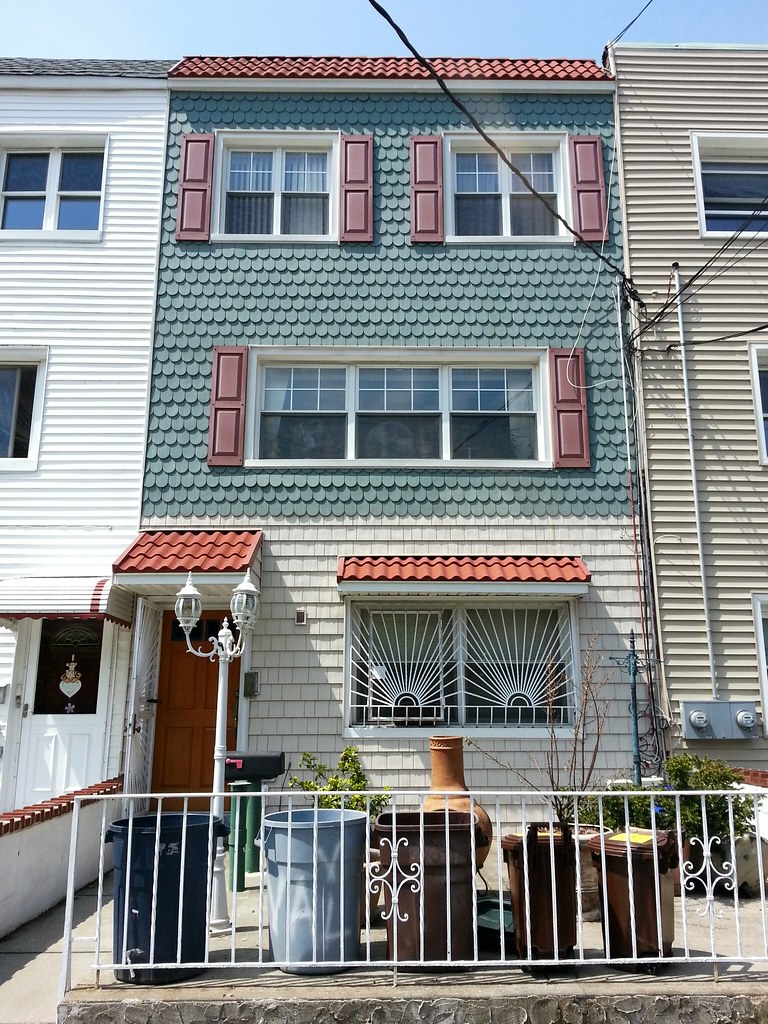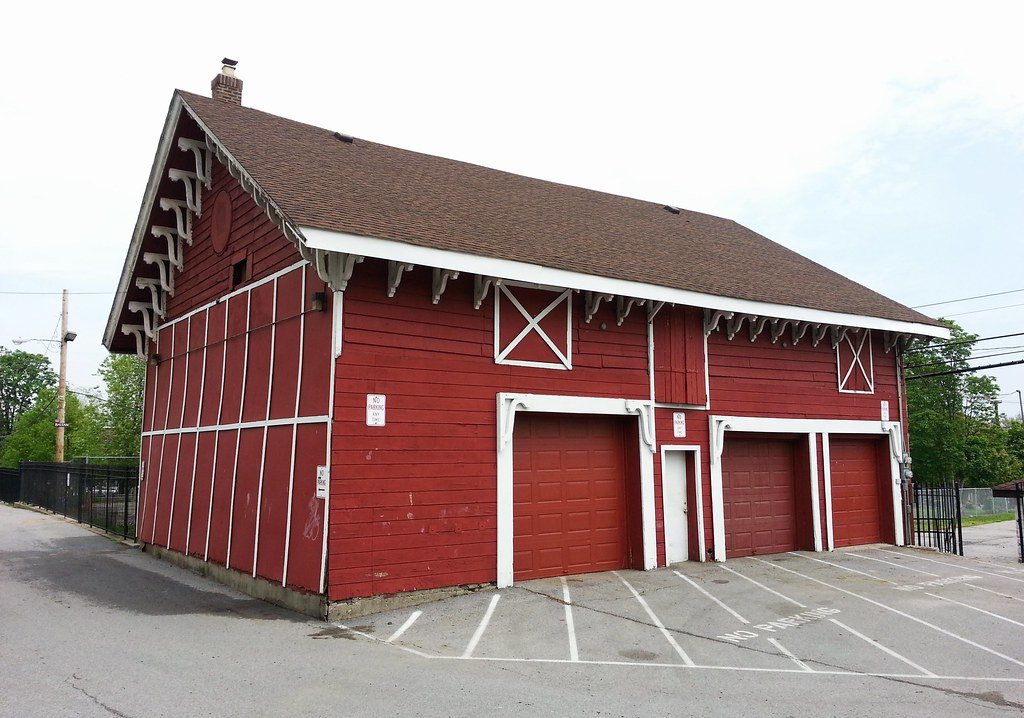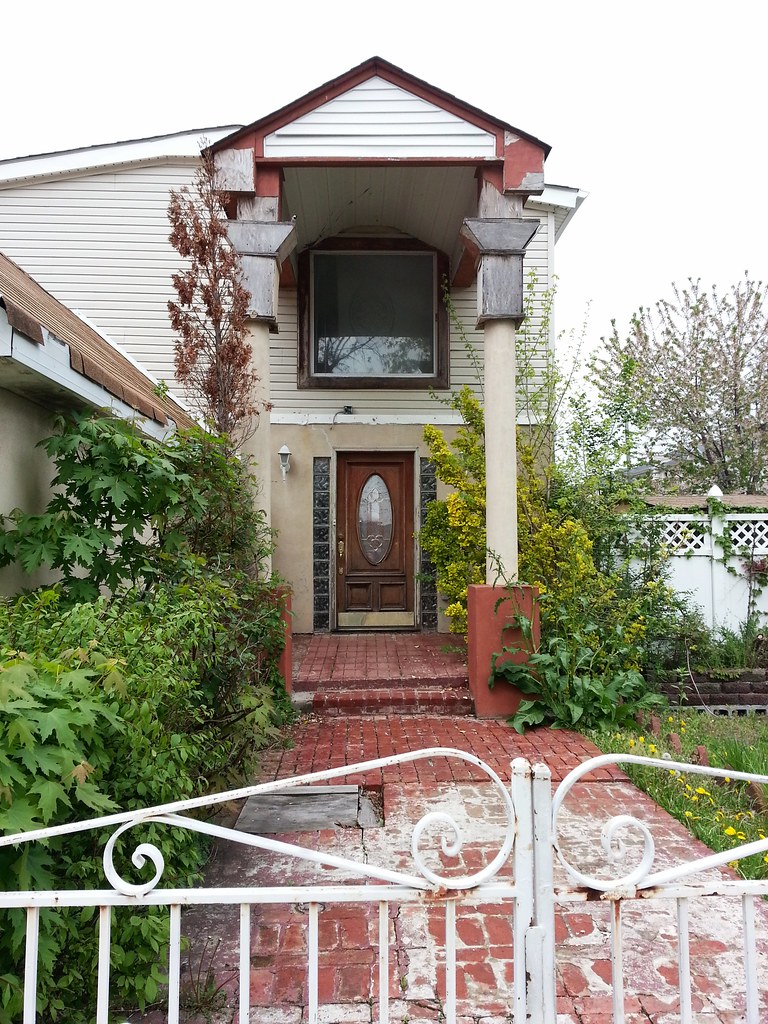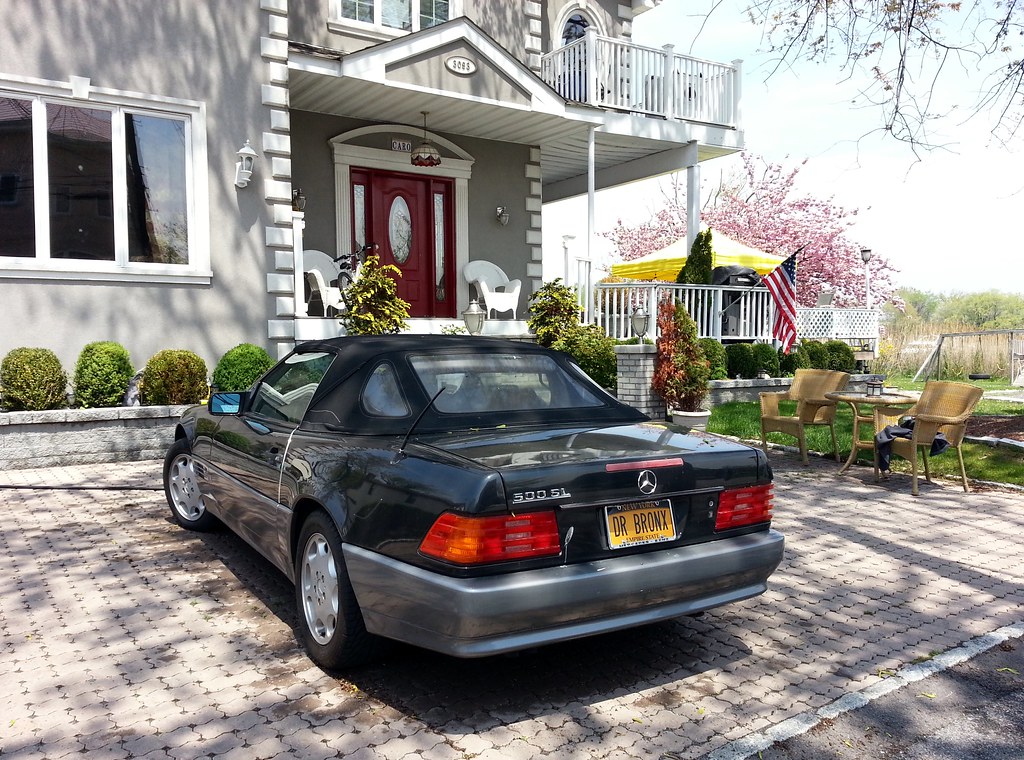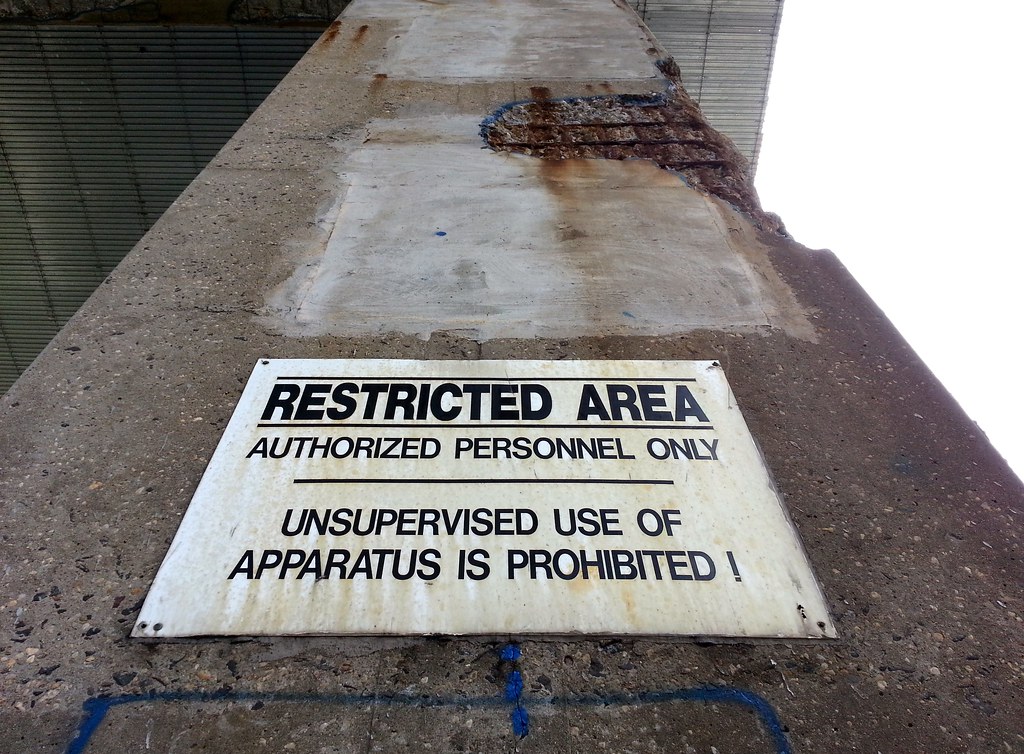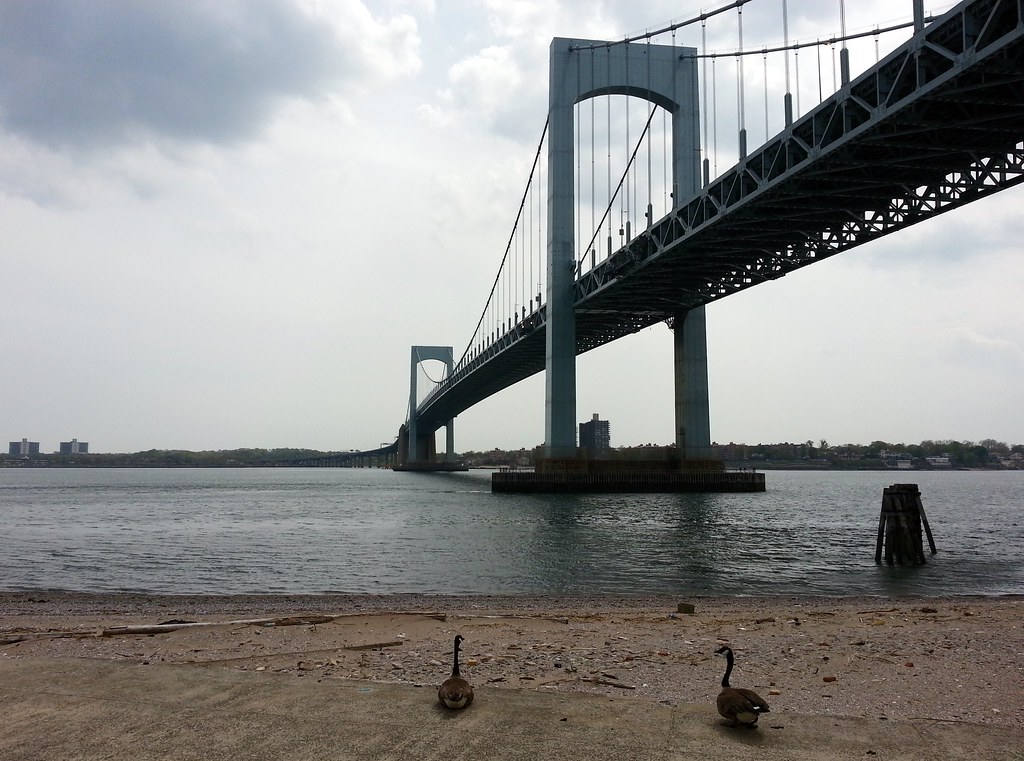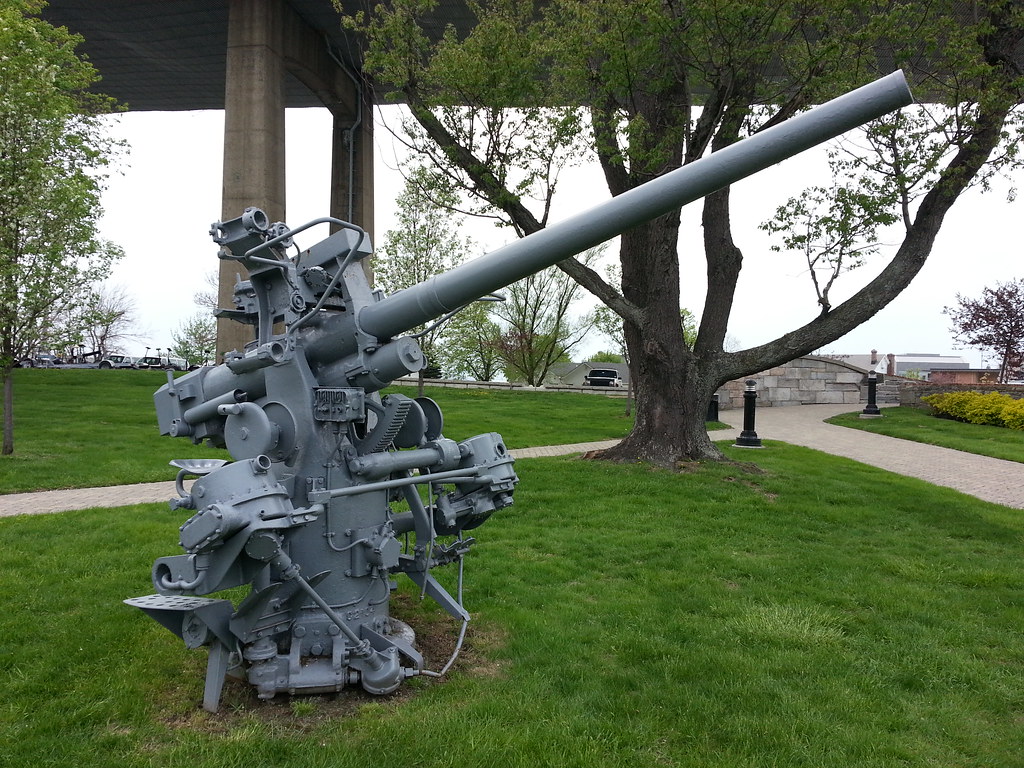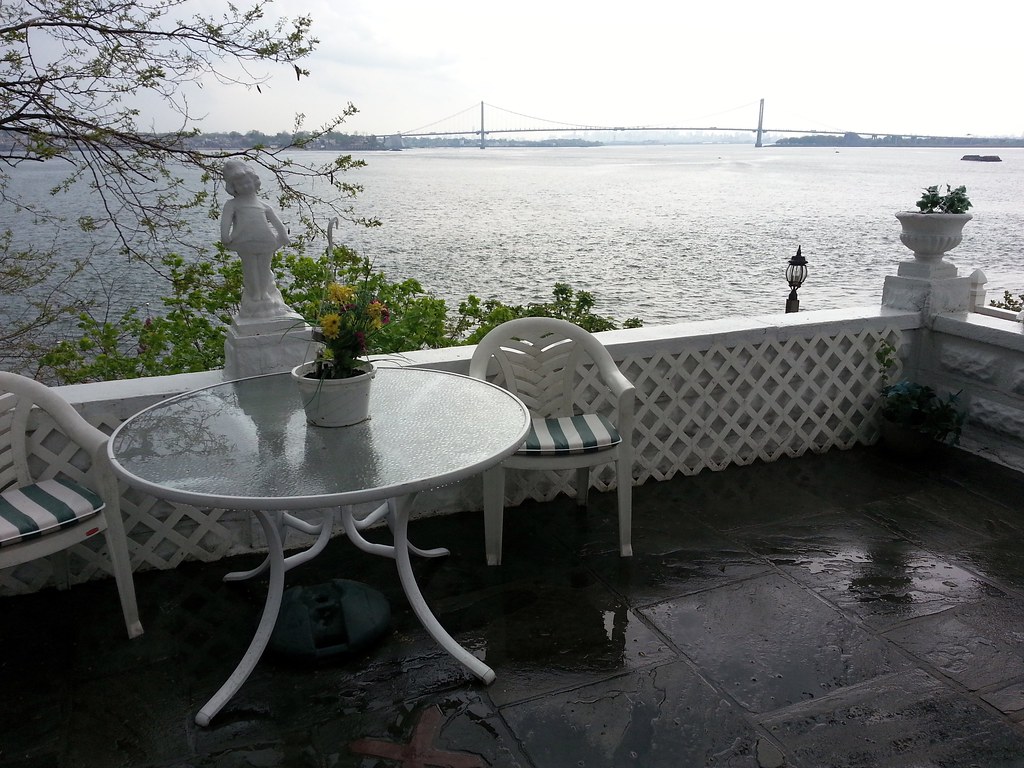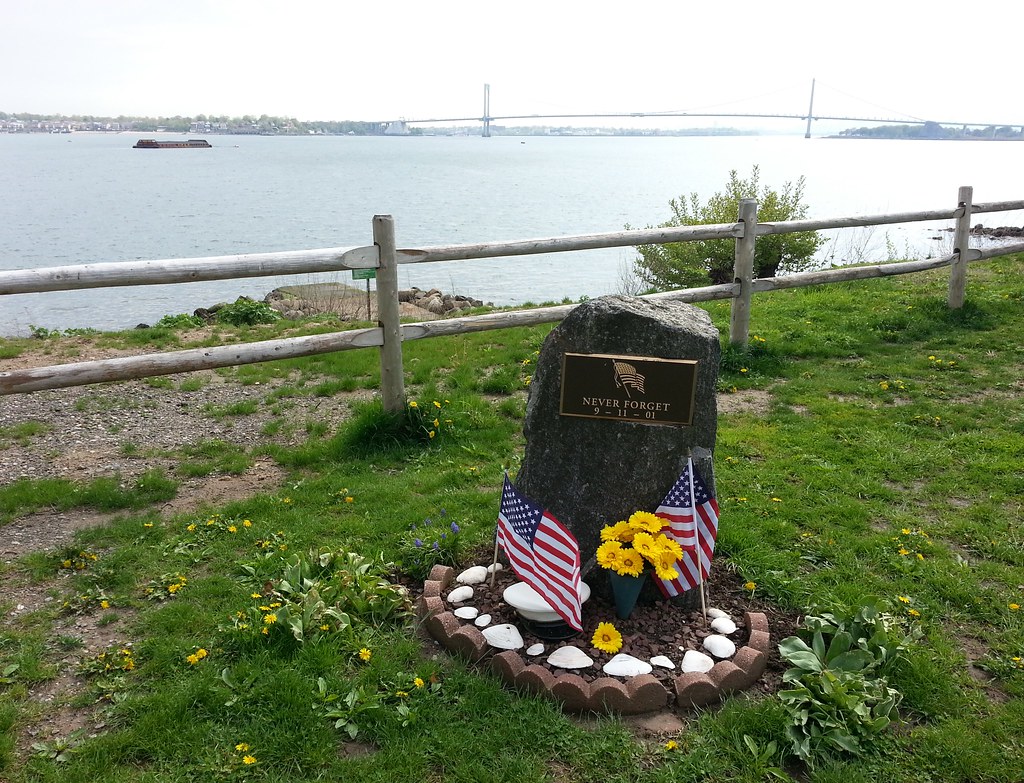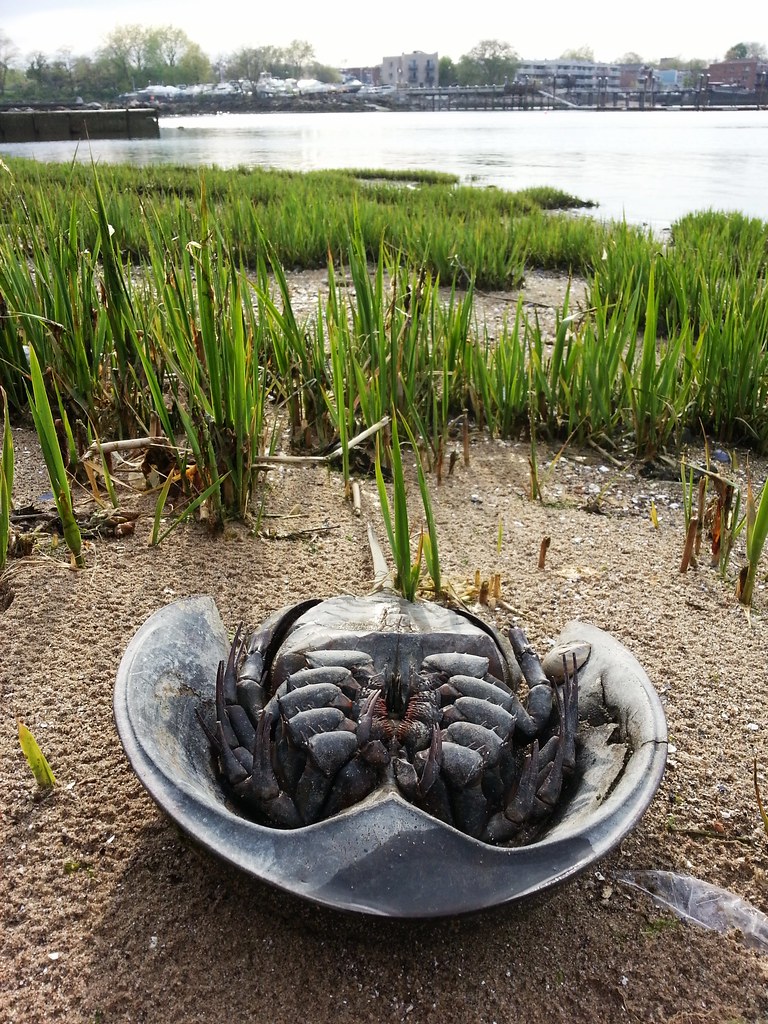

Speaking of such names, the Bronx is home to tens of thousands of Albanian-Americans. While searching for information on this subject, I came across two interesting articles: 1) a 2001 piece about the dozens of Italian restaurants in the NYC metro area that are actually run by Albanians, and 2) a 1999 story about local Albanians preparing to enlist as volunteers in the Kosovo Liberation Army:
Scores of them, from youths barely out of high school to grizzled men old enough to be their grandfathers, jammed [Frank's Sport Shop on East Tremont Avenue] to buy fatigues, pistol belts, compasses, boots and night-vision binoculars. Duty dictated that they fight for a place some of them had never visited or a country others left decades ago.
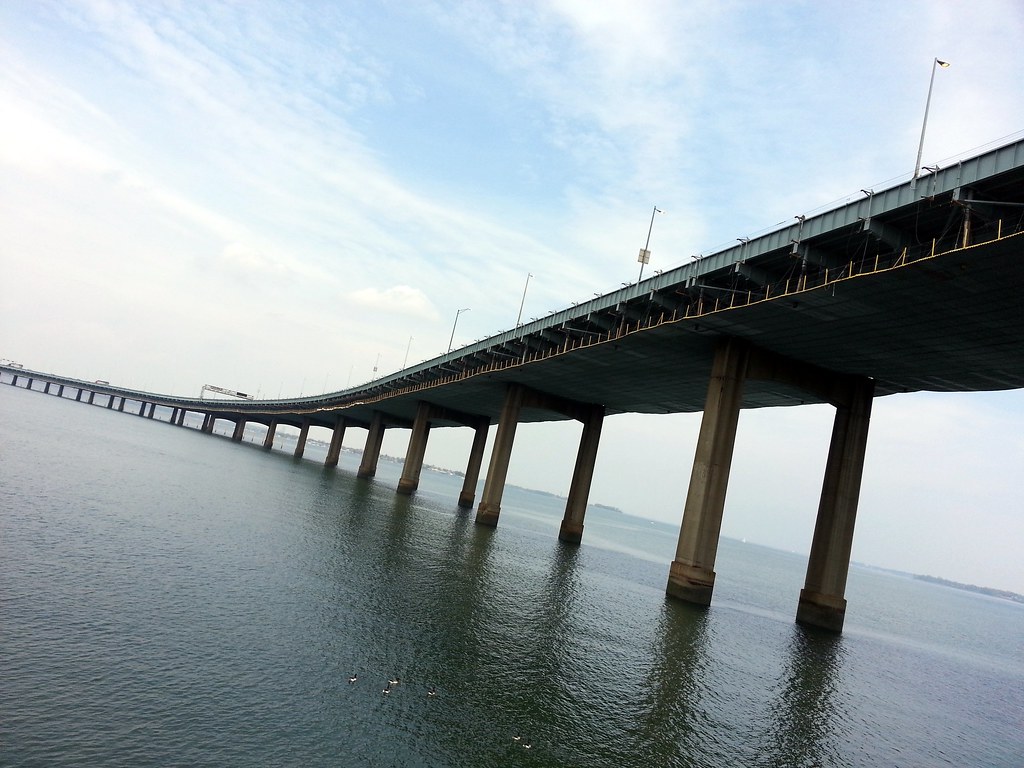
The long, curving approach on the Bronx side of the Throgs Neck Bridge
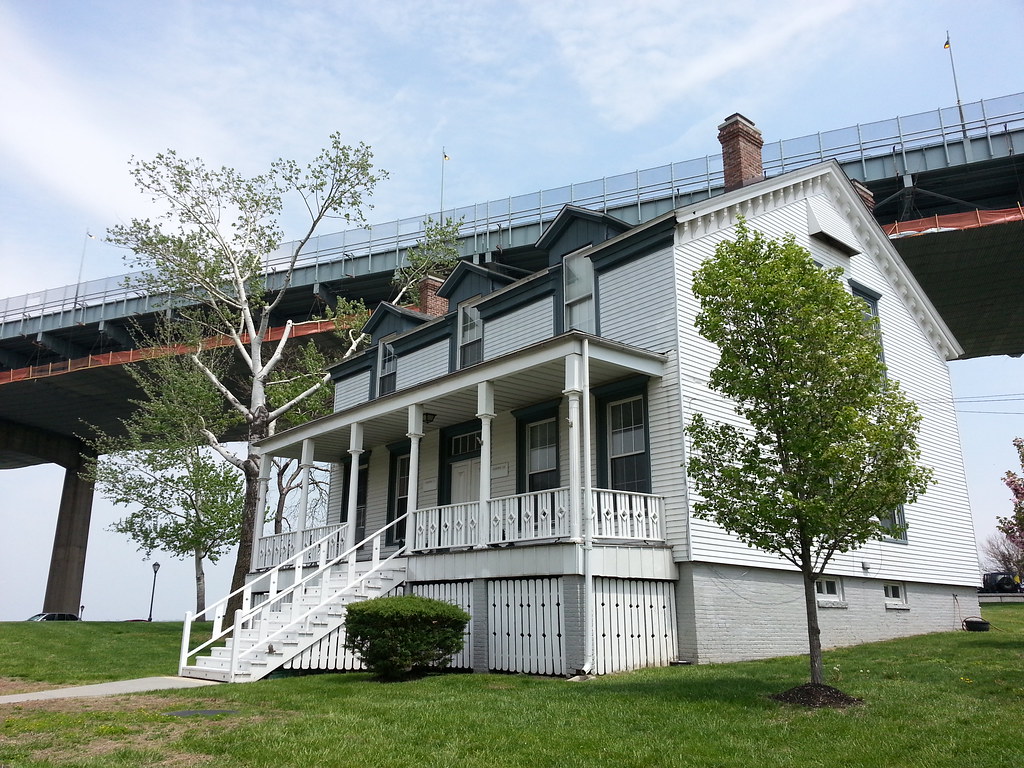
This is one of four handsome houses standing in a row on the grounds of old Fort Schuyler, where perhaps they were once officers' quarters. The fort and the surrounding property now serve as the campus of SUNY Maritime College, and the houses are currently used as faculty residences. There was originally a fifth house standing to the left of this one (compare a 1924 aerial photo to a 1996 photo), but it was knocked down to make way for the Throgs Neck Bridge.

This 60,000-pound propeller on display at SUNY Maritime College originally belonged to the SS United States, the fastest trans-Atlantic ocean liner ever built. According to the NY Times, it "was built for speed because it was meant to be a troop carrier if needed. The Pentagon paid two-thirds of its $78 million construction cost."
The ship has been out of service since 1969 and moored at a Delaware River pier in Philadelphia since 1996, but it looks like it may be moving back home to New York in the not-too-distant future to serve as "a hotel, museum, shopping and restaurant mall, entertainment complex, conference center, educational facility, or some combination of all options for reuse."

Fort Schuyler, at right, is a pentagonal stone fort built in the mid-19th century at the tip of the narrow Throg(g)s Neck peninsula in the Bronx, where the East River meets Long Island Sound. Along with Fort Totten across the water in Queens, Fort Schuyler was positioned to defend the entrance to the East River against enemy naval forces trying to reach New York Harbor. Check out this awesome aerial view, and this more pragmatic map, to get a sense of the area's geography.
The fort never saw any combat, but it was quite active during the Civil War, when troops were trained here and a hospital and prison opened on the grounds. By the 1910s, however, the fort was considered obsolete, and the Army finally decided to abandon it around 1931. After a lengthy reconstruction by the federal Works Progress Administration, the property was dedicated as the new home of the New York State Merchant Marine Academy (now SUNY Maritime College) in 1938, and it still serves as the school's campus today. In addition to the conventional college buildings found here (campus map), the fort itself has actually been converted into academic space. It contains a library and the expansive Maritime Industry Museum, as well as classrooms and offices — a pretty impressive reuse of an old 19th-century fortification!
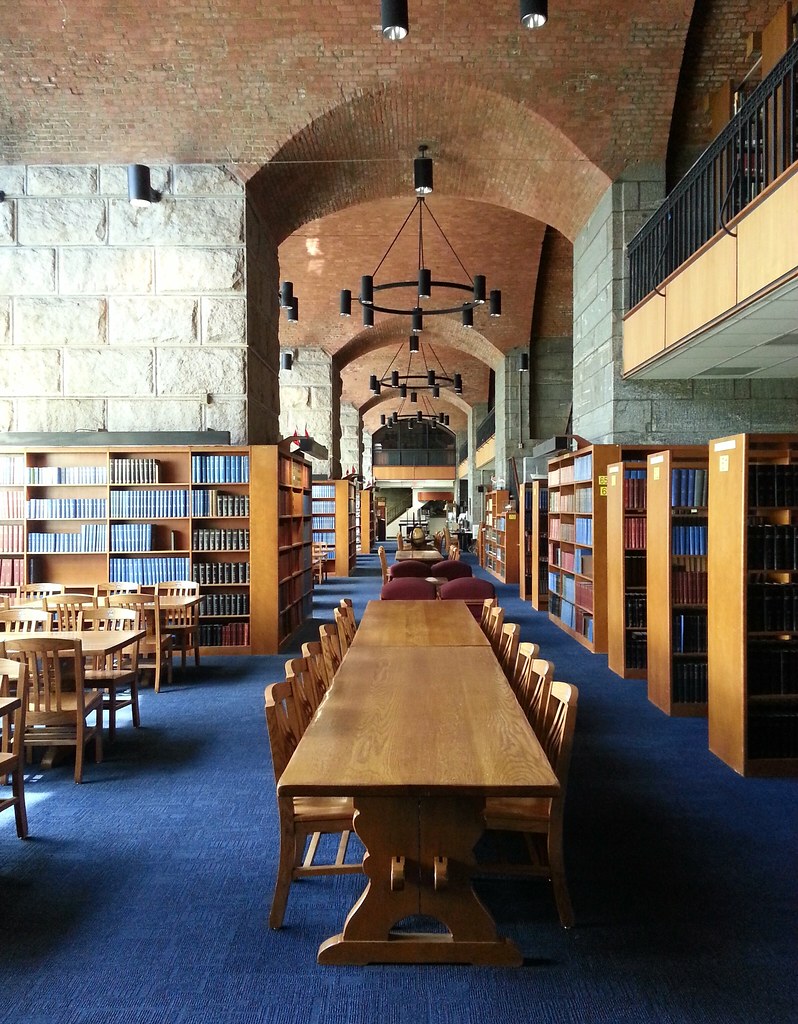
Along with the Maritime Industry Museum and some classrooms and offices, this library is located inside old Fort Schuyler at SUNY Maritime College.
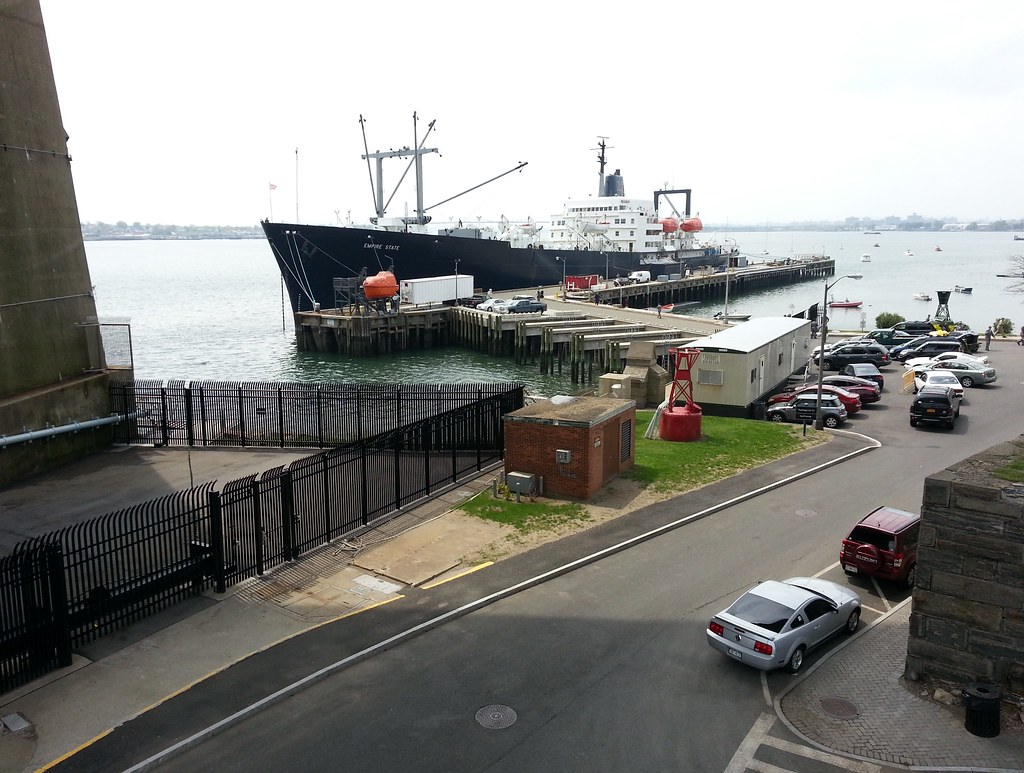
This former freighter has been SUNY Maritime College's training ship for the past quarter-century. In this photo, it's just two days away from departing on this year's three-month-long Summer Sea Term voyage to Baltimore, Philadelphia, the Canary Islands, Ireland, Denmark, and Portugal.
As part of the nation's Ready Reserve Force, the ship has also been called into duty on a few occasions during its time here at SUNY Maritime, once to bring American troops back from Somalia in 1994, and twice to provide housing for relief workers in hurricane-stricken areas (New Orleans after Katrina and New York after Sandy).
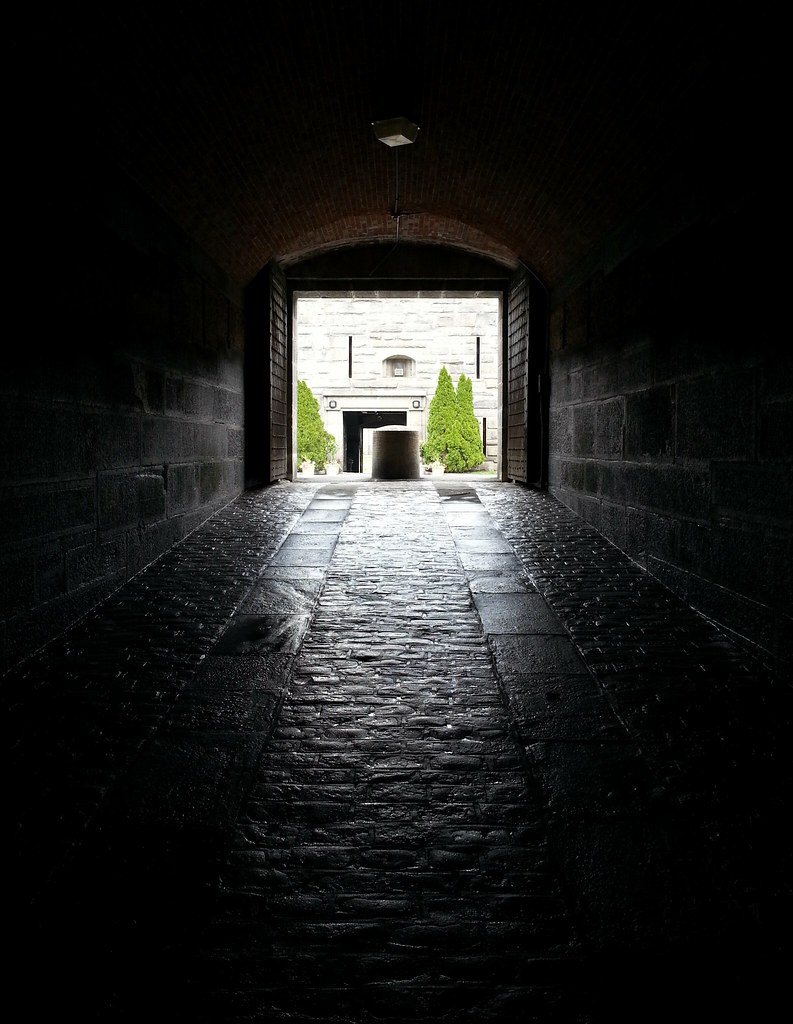
Passing beneath Battery Gansevoort, just outside the walls of Fort Schuyler
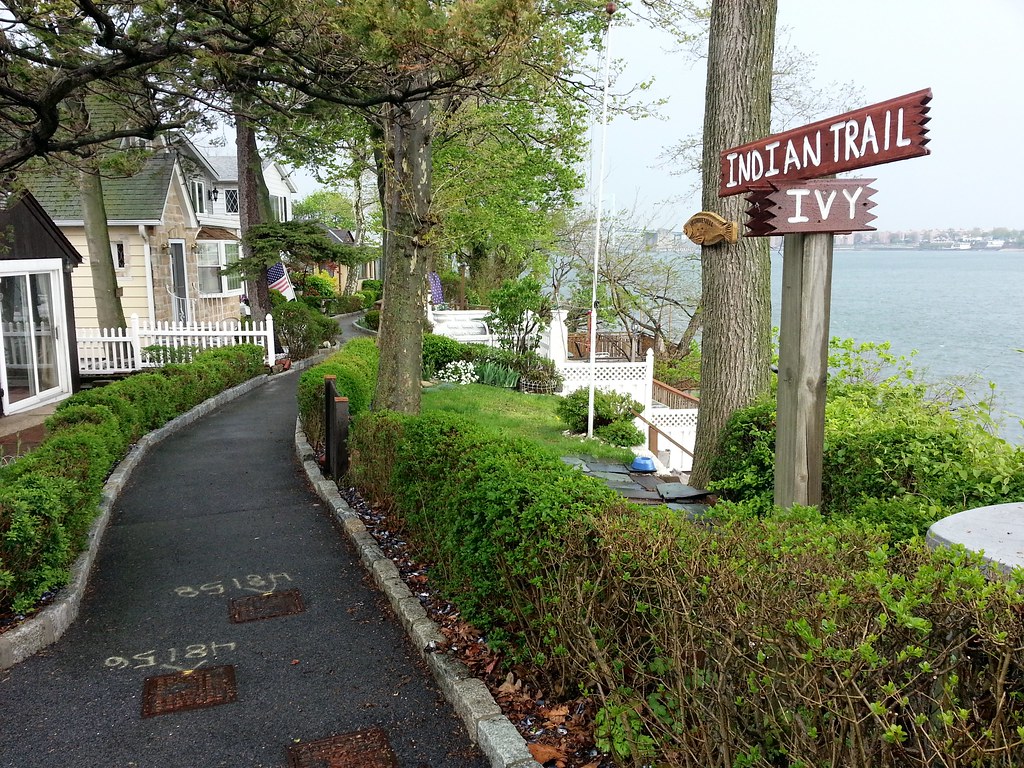
This ridiculously quaint path runs along the western edge of Silver Beach Gardens.
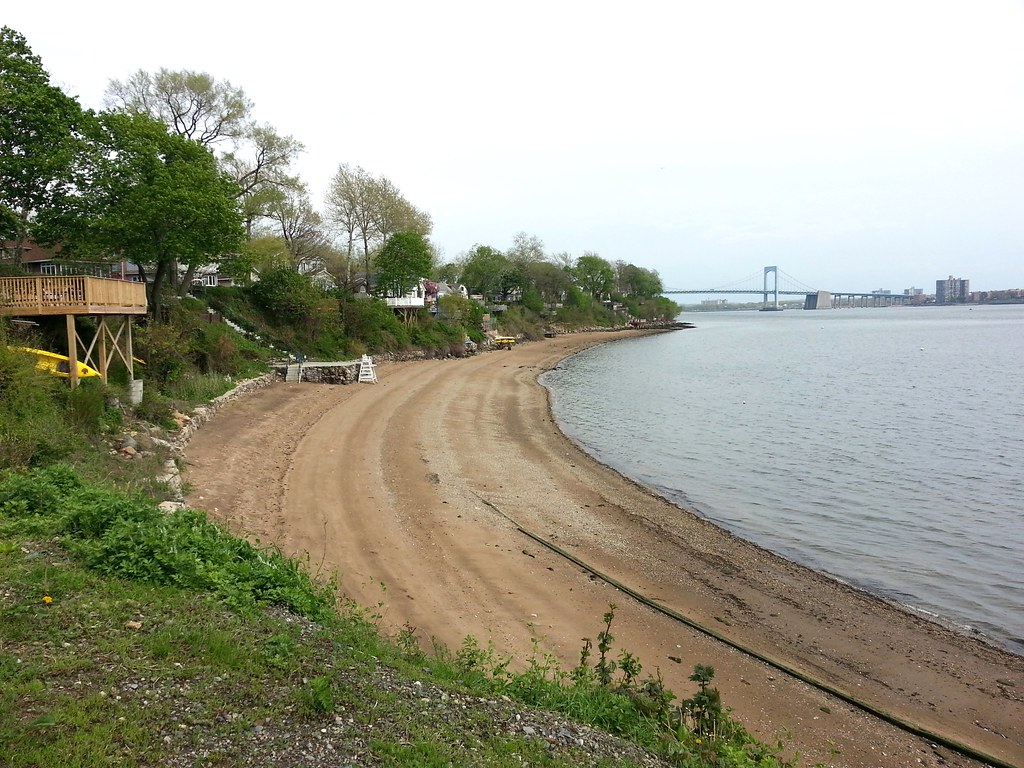
As you can see, the houses of Silver Beach Gardens sit on a bluff up above the beach. Facing this direction (southeast), you can see the Throgs Neck Bridge in the distance.
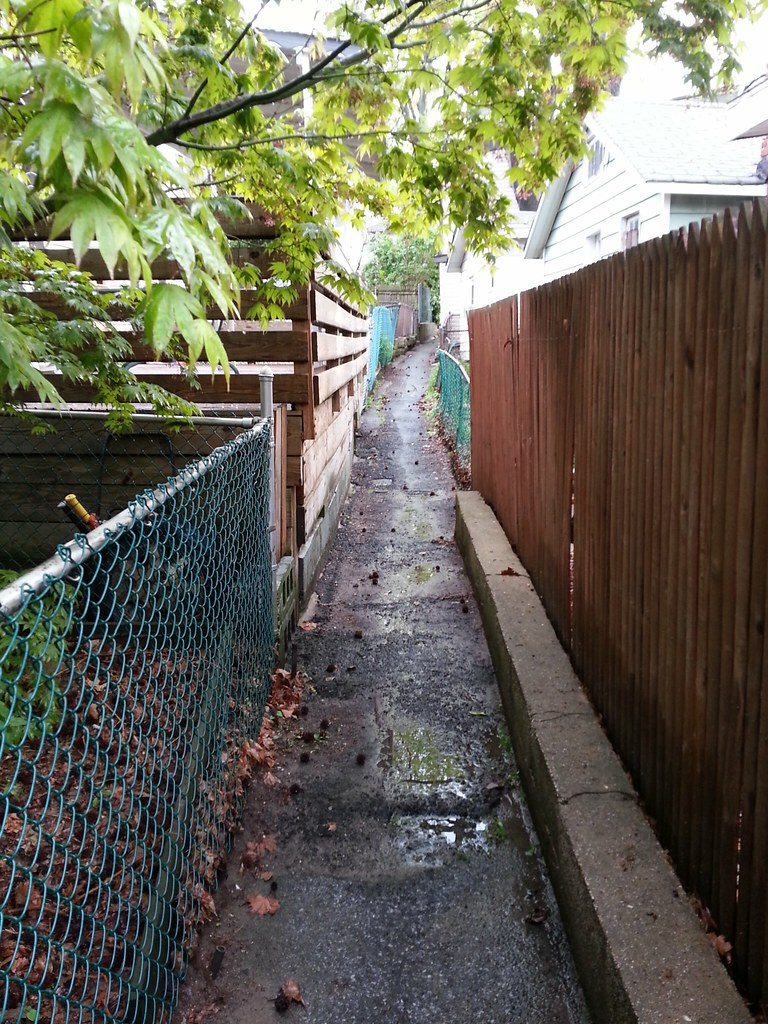
Here we are one last time in Edgewater Park, where there seem to be just as many little pedestrian alleys as there are roads. Some background on the neighborhood from the NY Times:
In 1923, when Richard W. Shaw Sr., the first of four generations of Shaw landlords, bought the property, only one house stood out: a great stone mansion that overlooked pastures, swamps and, of course, the water.
During the summer he permitted church groups, Boy Scouts and, later, workers from New York City to pitch tents or build rustic cottages on what became known as Edgewater Camp.
"As kids, we'd go see cows grazing and then go down to the farmhouses nearby and steal tomatoes and squash," said John McNamara, a 72-year-old Bronx historian and former Edgewater resident, who recalls lazy summers of courting schoolgirls in canoes and walking three miles to the nearest trolley into town.
"We lived in wooden-sided tents with canvas tops," he said. "We had no electricity, just kerosene stoves. It was a real pioneer community."
In the 1930's, the Great Depression forced many of the summer residents to sell their homes in the city. They winterized their Edgewater bungalows with newspapers, cardboard boxes and other crude insulation. A permanent community was born.
For all its scenic beauty, Edgewater is a planner's nightmare, with neither building codes nor zoning laws. Fire hydrants sprout in backyards, a reminder of how the early residents simply ignored the street grid the city had planned for them.
The result is a jumble of 675 single-family houses shoehorned into 55 acres of land, elbowing one another on 30-by-50-foot plots.

